Electricity in cannabis grow rooms
List of contents
The electrical installation of our indoor cannabis grow room is a key aspect if we want an efficient and safe power system, so we should not forget its importance. The Philosopher Seeds cannabis seed bank recommends you to carefully read this post and ask a trusted electrician in case of doubt. If the installation of our grow room is not correctly done or is not in line with the electrical installation of the building - or the contracted power - we can have problems. This is why everything must be clear and we'll always avoid hasty solutions. Of course, using certified and approved materials is also a must.
In this post we tell you some of the most important details relating electricity and indoor cannabis gardening; from the most theorical concepts to how to calculate the cost of each electrical device. Let's go into detail now.
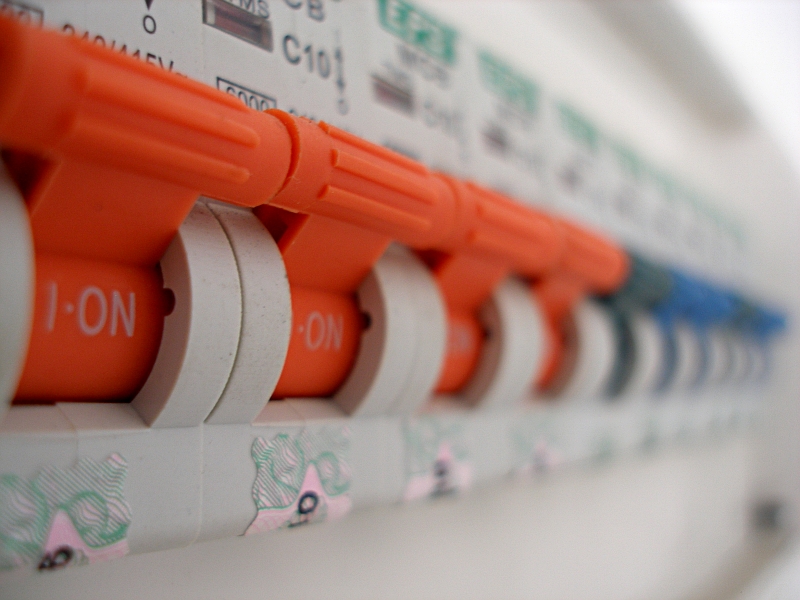
The electrical installation of the house
The first thing to do when setting up an indoor grow room to grow cannabis - or any other plant - is carefully checking the electrical installation of the house. We must know the contracted power (we can ask the power company) and check that the existing electrical installation is in line with the contracted power, that is to say, that both the wiring/electrical panel and the building's electricity supply have been properly installed.
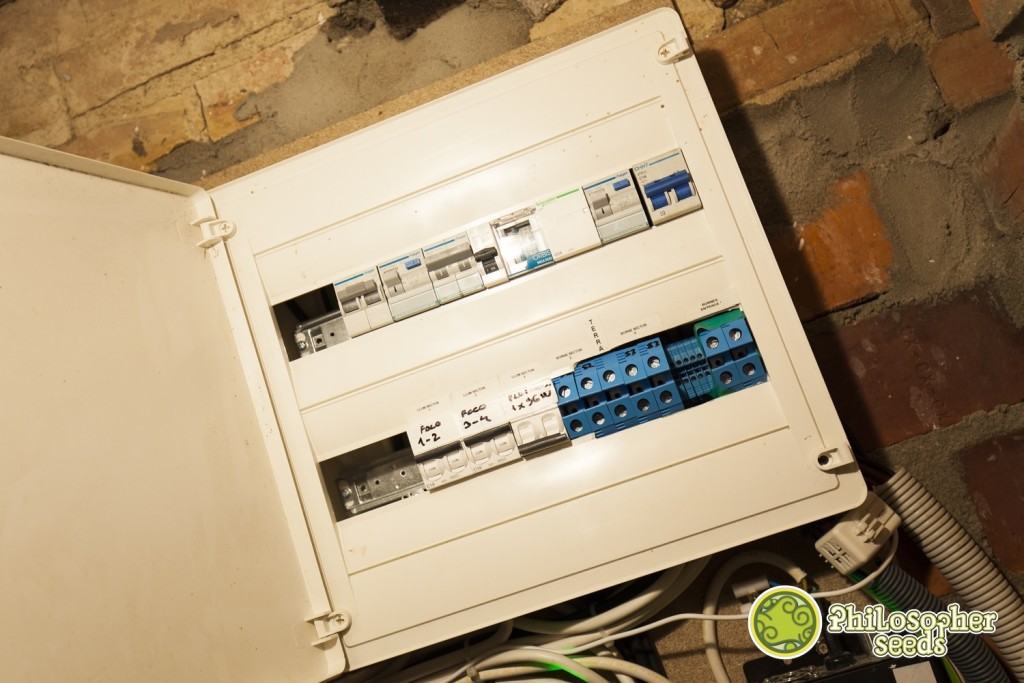
Thus, we must check the electrical panel of the house: we'll find the circuit breakers, which interrupt the current flow of each power line to protect the circuit from overloads or short-circuits. In this way, circuit breakers protect both the installation and the devices connected to it. Normally, each power line of the house has its own circuit breaker.
In this panel we also find the residual-current device (RCD) or residual-current circuit breaker (RCCB). It is another safety electromechanical device for AC installations. Its main function is to protect us from direct or indirect contacts, as well as to prevent potential fires. Thus, the RCD disconnects the circuit when it detects that the electric current is not balanced between the energized (line) conductor(s) and the return (neutral) conductor, avoiding electric shock risk. If our RCD disconnects a circuit, we must carefully check our installation for faults and never replace it for a less sensitive device.
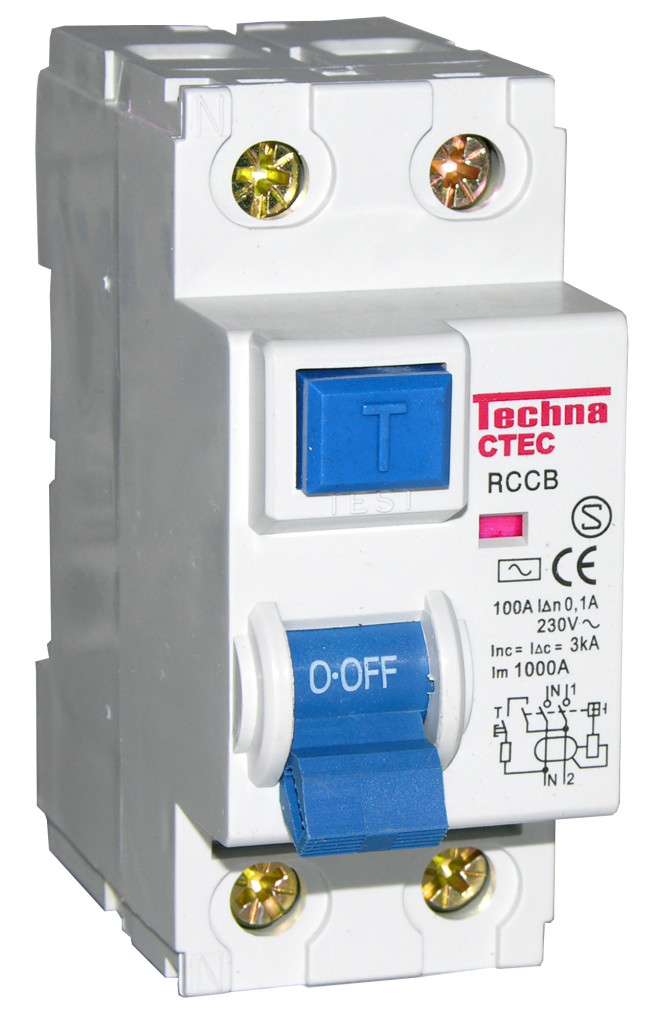
The next step is determining which electric line of the house are we using in our grow room, which obviously depends on the location of the room. We must know the cable cross-section - cable thickness - so we can determine the maximum power tolerated for our installation. In most cases, wall sockets have 1,5mm cable section, kitchen lines (oven) have 2,5mm section and lines for washing machines, spin-driers and other special devices have a cable section of 4mm.
If we don't know which line is supplying power to the room that we want to use, an easy option is disconnecting all circuit breakers of the electrical panel and then connect them one by one. Also, check the amps tolerated by the circuit breaker and make sure that it is in line with the cable section of the corresponding electric line. In this way, we know the maximum power tolerated by the electric line. We should always keep in mind not to overload the electric line, so we'll always use up to 80% of its capacity.
Let's see an example:
10 amps line (1,5mm cable cross-section): 10 x 230 = 2.300W of maximum power. As we are only using 80%: 1.840W is the maximum power output for an electric line with this cable section.
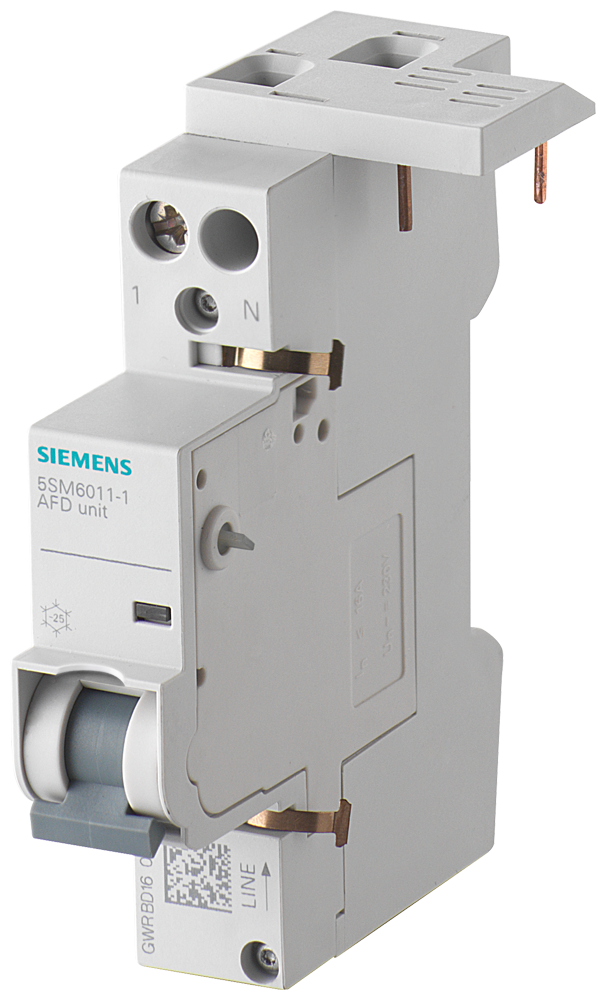
If necessary, and as long as we respect the relationship between the contracted power and our energy consumption, we can add a new line from the electricity meter and through the electrical panel of the house (where we'd install a new circuit breaker for the new line) and to the desired area of the house.
Logically, and in order to make sure that our installation is not everloaded, we should know the electricity consumption of the house without our growing system connected (lights, ventilation, etc). In this way, we'll know if we should contract more power, add new lines or perhaps replace the building's electricity supply (only in rare cases).
Electrical installations for indoor cannabis rooms
Let's imagine that we want to set up a grow room at home so we can grow our own marijuana. We have a room available, and we've already checked that the cable section of the line supplying power to this room is 1,5mm. As we have seen above, we can then use a maximum of 1.840W, 80% of the total capacity of the cable. We want to use two 600W lamps and need around 300W for our ventilation system, so we need a total of 1.500W (1500 / 230 = 6,52 amps, which is perfect since we wanted to use up to 80% of its capacity, 8 amps.
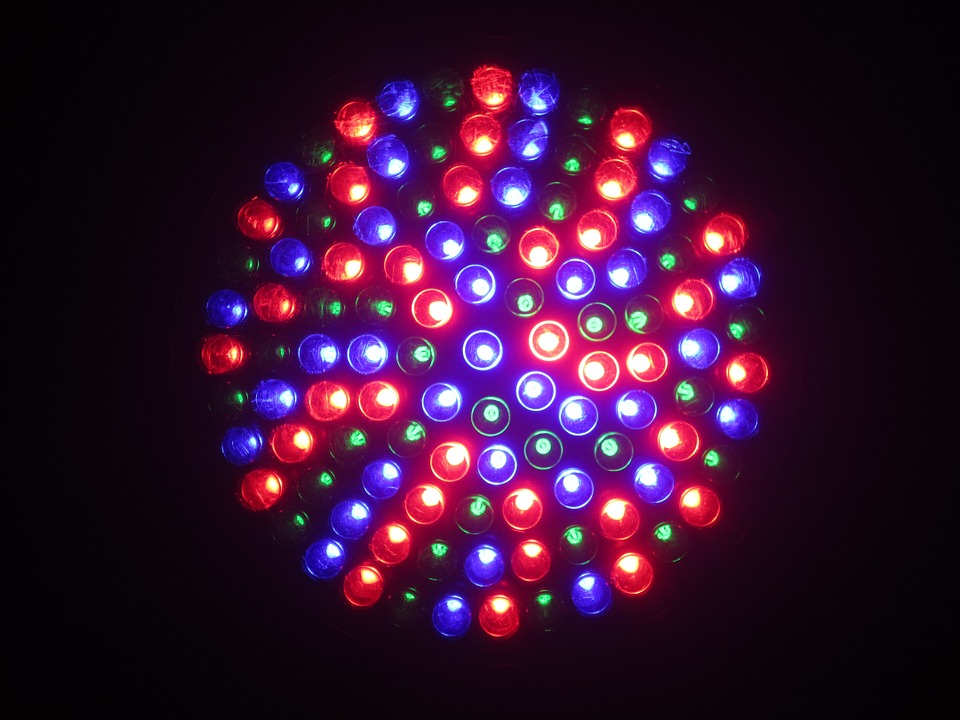
As we already mentioned, if we wanted to install more lights or an air conditioning system, we should connect a new cable directly from the electrical panel, where we can connect the new devices without the risk of overloading the installation. Doing so is important, since otherwise the circuit breakers will constantly interrupt the current of the overloaded electric line. Furthermore, cables can heat up, increasing the risk of fire if our current breaker is not in line with the cable.
How to calculate the electricity cost of our grow
To know the cost of our indoor growing system is easy. Basically, it depends on the power consumption of each component of the system, but also on the price per kW and the daily hours of use. We just have to use the following formula:
During growth (18 hours of light per day), for a total of 1.500W and at 0.1269 €/kW:
1.500 x 18 = 27.000W per day = 27Kwh/day. Multiply it by 30 to know the monthly power consumption: 27 x 30 = 810Kwh. We only have to multiply this number by the kW price: 810 x 0,1269 = 102,79 €/month.
During flowering (12 hours of light per day), and also for 1.500W:
1.500 x 12 = 18.000W per day = 18Kwh/day. Multiply it by 30 to know the monthly power consumption: 18 x 30 = 540Kwh. Multiply this number by the kW price: 540 x 0,1269 = 68,52 €/month.
If we want to, we can write down a list with all the electrical devices and calculate their cost individually by using the same formula that we have seen.
Another option is purchasing an electricity monitor. This devices use WIFI connection and enable us to know, in real time, the exact power consumption of the room/house. They provide data on kWh, cost and kilograms of CO2 emitted. They usually consist of three parts: sensor, transmitter and receptor. Simply connect the monitor unit to the electricity panel and it'll start monitoring power consumption.
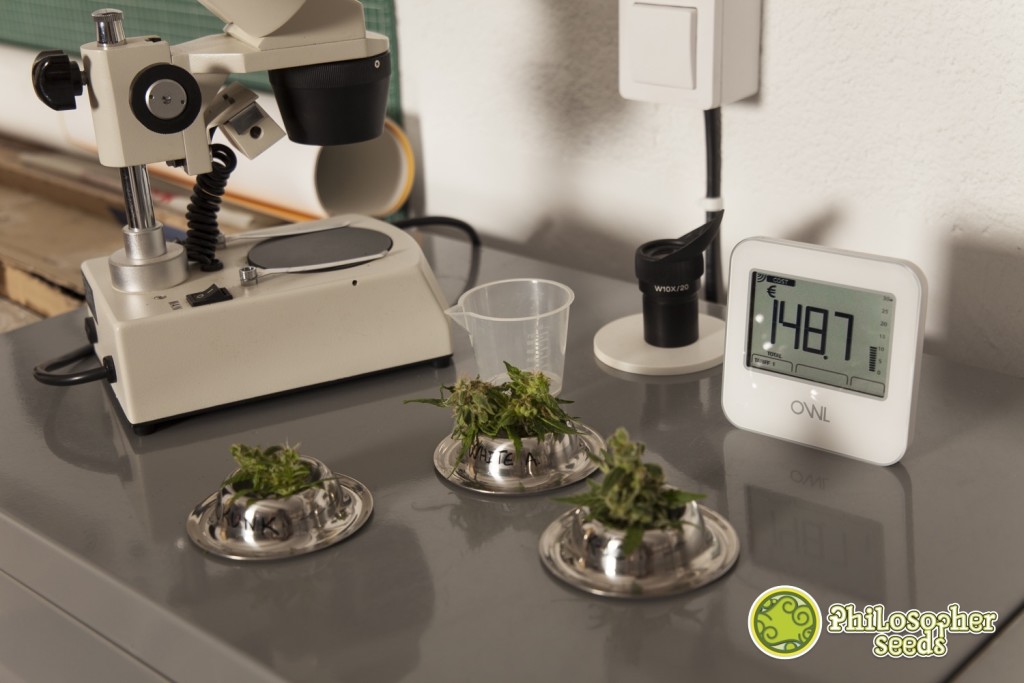
Electrical safety systems for cannabis grow rooms
As we have seen above, circuit breakers act as safety systems for the different electric lines of the building. As the name suggests, they consist of two different parts - a coil and a bimetallic strip - which provide magnetic and thermal protection. We have also seen residual-current circuit breakers, another essential safety system in any electrical installation. Still, these are not the only devices that we want to have installed.
Another interesting device for any grower are contactors, which, together with analog timer switches, provide maximum reliability and avoid any risk of failure, as happens with cheap timers that often heat up and stop operating properly, leaving our plants with a 24h photoperiod.
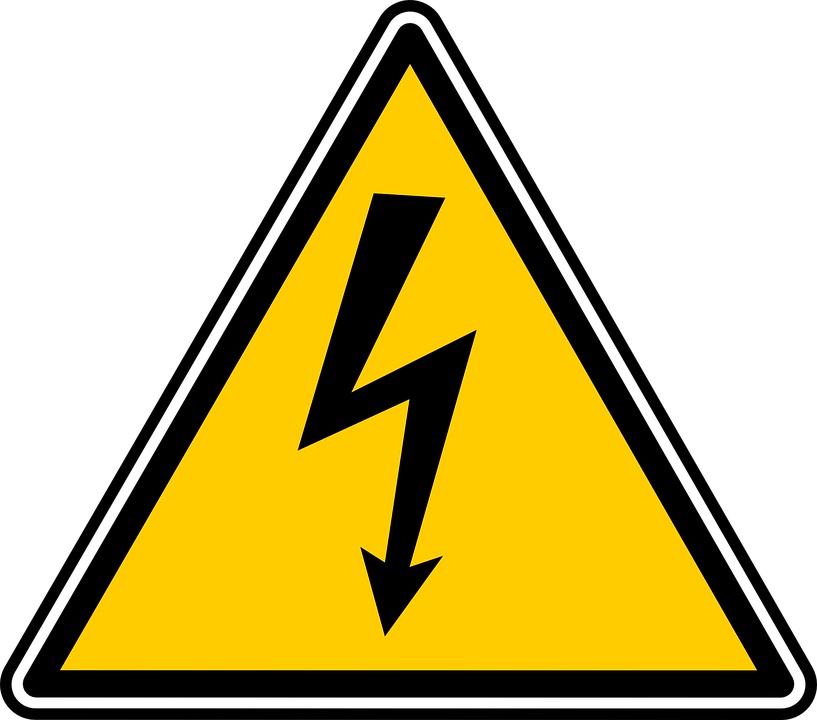
Of course, every component that we use must be in line with the others. Do not use cheap materials and always ask an electrician before setting up your installation. Trying to save money on the electrical installation of our grow room is the best way to have problems.
Basic safety rules for working with electricity
Here you have a list of basic security measures that everyone should follow when working with electricity:
- Use appropriate clothes
- Do NOT wear metal objects: necklaces, watches, rings, etc. They could cause a short-circuit.
- Use tight clothing and non-slip shoes.
- If possible, always switch off the power.
- In high-voltage lines, and even with the circuit closed, the electrician should always be properly earthed.
- Use appropriate gloves and protect the cables with insulating material.
- Carefully check the electrical installation before adding connections to it.
- Use appropriate and certified tools.
- Avoid cable loops to prevent over temperatures.
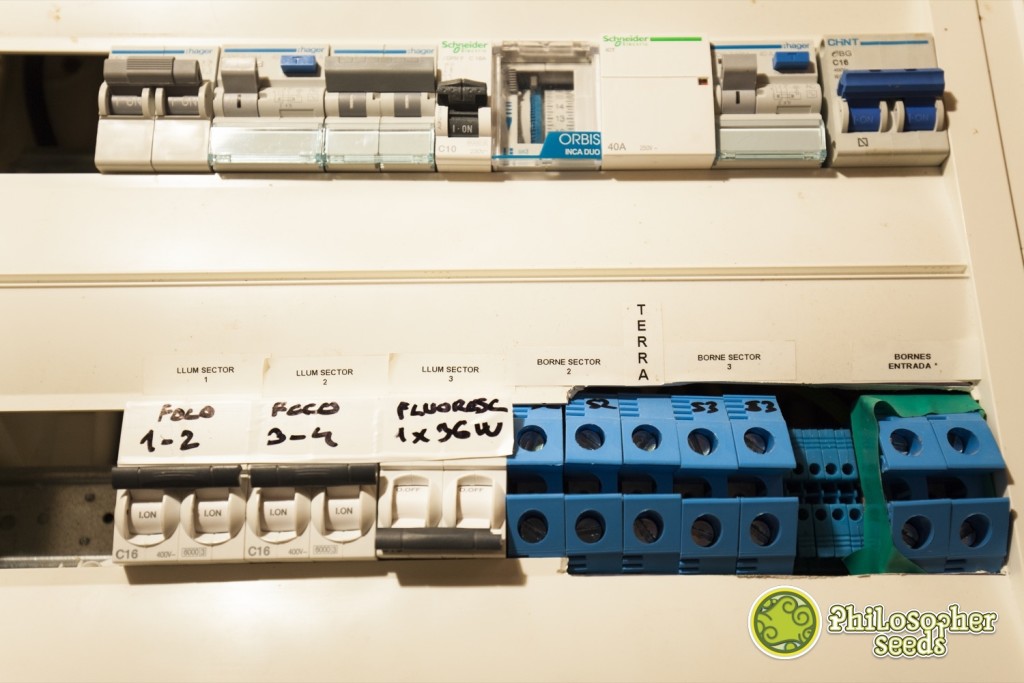
We hope this post helped you to upgrade your electrical installation and understand the importance of safety systems when growing cannabis indoors at home.
All our best vibes!





